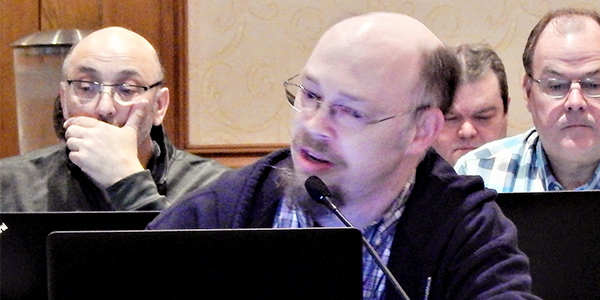By Amanda Durish Cook
INDIANAPOLIS — State regulators in the MISO and SPP footprints are considering an independent analysis of the interregional planning process to supplement the seams coordination analysis already underway by the two RTOs’ market monitors.
The Organization of MISO States and the SPP Regional State Committee’s Seams Liaison Committee agreed unanimously at a July 21 meeting to scope an independent analysis that would examine whether the RTOs are leaving efficiencies and benefits on the table in their interregional transmission planning.
The joint committee will allot 30 days for stakeholder suggestions on how the analysis might look and what questions it will probe.
“We don’t know at this juncture what the analysis will be,” OMS President and Missouri Public Service Commissioner Daniel Hall told fellow regulators.
The regulators’ plans reflect frustration over the inability of the RTOs to find beneficial projects across their seams.
Missouri PSC economist Adam McKinnie said recently approved improvements to the MISO-SPP interregional planning process may or may not lead to their first-ever project. He agreed with other regulators that interregional project construction is not necessarily an indicator of the health of the MISO-SPP planning process.
“If there’s a good opportunity and a project, let’s do it, but I don’t want to add work. I don’t want to dig ditches for fun,” McKinnie said.
“If there are [economic] benefits and we’re not capturing them with projects, then we have a problem,” Arkansas Public Service Commissioner Ted Thomas added.
Earlier this month, FERC OKs Changes to MISO-SPP Joint Study Process.)
MISO and SPP completed two 18-month studies beginning in 2014 and 2016. They began another Coordinated System Plan earlier this year, skipping a 2018 start date in favor of trying to improve their interregional planning processes. However, early indications are that the newest study may not yield a project either. (See “Revised Seams Study with MISO yet to Bear Fruit,” SPP Seams Steering Committee Briefs: July 10, 2019.) The RTOs will report conclusive CSP results at an Aug. 19 Interregional Planning Stakeholder Advisory Committee meeting.
McKinnie said MISO and SPP’s regional economic planning models still differ on assumptions like load, fuel mix and where new resources will be sited.
FERC Commissioner Cheryl LaFleur, who attended the meeting, reminded liaison committee members that MISO and PJM’s level of seams coordination was not always held up as the standard it is now.
“There were six stormy years — maybe not all of them stormy — that it took to get there,” LaFleur said.
LaFleur also said she was working during her short time left on the commission to get her colleagues to devote attention to MISO-SPP seams issues.
Meanwhile, work continues on MISO and SPP’s market monitors’ seams study. Hall said both SPP and MISO market monitors are still open to modifications to the study’s work plan. (See RSC, OMS Approve Monitors’ Seams Study.)
MISO is paying Potomac Economics $250,000 to complete the first phase of the study. SPP has an in-house Market Monitoring Unit and has not disclosed a special budget item.
“We’re ready to go; we’re ready to work with you; and we think it’s time,” Hall said of the study in remarks before the MISO Board of Directors in June.
OMS and the RSC expect the first phase of the monitors’ study results to be released in September. The first phase of the study focuses on market-to-market coordination, rate pancaking and joint dispatch. A second phase of the study will concentrate on interface pricing, interchange optimization and regional directional transfer limits.





